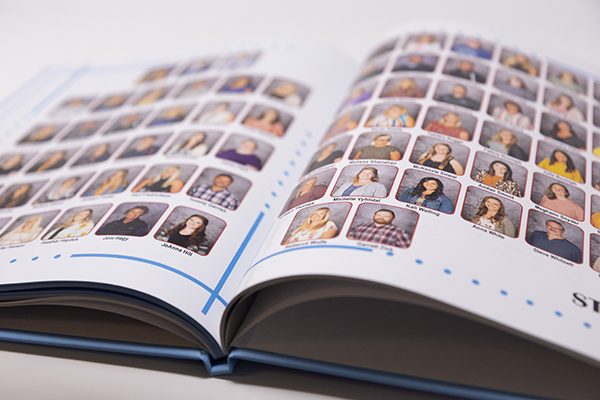Optical Illusions: Seeing Is Believing
April 26, 2022
Eagle-eyed, or just cross-eyed?
“I think these optical illusions are really interesting, because I love the idea of “mind tricks” and there being more to something than what the eye can see,” states Elkhart High School teacher assistant, Ms. Lacey Barkdull.
Optical illusions have always seemingly been a fascination for the human psyche. All over the internet, researchers and curious users alike have shared fantastical and strange illusions that trick the brain into believing something is there when it is not actual present, believing something is a different size or a different color when compared to another, similar object, believing that gaps do not exist in a picture based on the image’s existing information, etc., but one appears to continue to baffle people to this very day.
Incredibly popular in the 90’s, Magic Eye Puzzles still continue to confound people, and others still remain unable to figure out the trick. Despite being around so long, these optical illusion “puzzles” may fade in and out of people’s memories, but finding new ground and traction on the internet has continued to allow these unique picture-based mind tricks to continue to spread and further confuse the next generation of web-explorers. However, this means another generation is also still getting stumped by these pictures and unable to figure out the trick to them or see the animals that others are supposedly able to see in the images. “It does not work for me,” mentions Barkdull herself, after attempting one of the illusionary photos and being unable to spot the figure in the image.
So, how do they work, and how can one get them to work for his or her eyes and brain?
For starters, it should be understood that the specific type of picture that these Magic Eye Puzzles are is called a “stereogram.” A stereogram picture is a 2D image that, when viewed with two eyes, can produce the illusion of depth perception, and therefore, 3D-looking figures or objects. Made popular in 1990 via the Magic Eye book series, these images are often created on computer, and use repeating patterns with very minor, subtle changes in said pattern to combine depth-based information for both eyes in one single image. Stereograms were originally used to better study human depth perception, specifically how the brain is able to make a single, cohesive image, despite one’s eyes seeing different, separate images. Because these pictures contain visual information for both eyes, separately, they trick one’s eyes into believing they are seeing different parts of one image or figure, and therefore, convince one’s brain and eyes to perceive a 3D object or figure in the image. So, one’s eyes end up seeing two slightly different images, which, when the brain tries to process them as one complete image, causes the figure formed in each picture via the pattern to appear as 3-dimensional. Human pupils are usually about 66 millimeters apart, which is why each eye winds up seeing pictures slightly differently. “I’ve always found illusions interesting,” starts Barkdull, “and I’ve looked them up on my own before, but I didn’t know that some of them have more significance than just being a funny internet thing, that said internet skewed from its original purpose.” A lot of people are able to spy the 3D figure, given enough time, but what if a figure isn’t appearing for someone?
The Magic Eye website explains that the puzzles are viewed at a “divergence distance equal to the width of one repeat of the 2D ‘visible’ pattern. If you’re good at diverging, you can diverge your eyes twice that distance. This will cause you to see multiple, distorted hidden objects in 3D.” Divergently viewing something means that, instead of looking directly at an object, with both eyes focused on the same sort of point, one instead makes his or her eyes focus as though they are looking through the object or image, letting the eyes not focus on the same exact point of the picture. The Magic Eye images are also often posted online with some sort of caption telling the viewer to start with his or her device up against the face, nose against the middle point of the picture, then to slowly pull the device away, and the figure will supposedly “pop out.”
However, these described steps may not work for everyone and may cause more people to be confused than able to see the supposed figure in the pictures. “It may not work for me, because I have astigmatism,” points out Barkdull while trying to figure out why she cannot see the illusion. It’s okay to be unable to see the figure, but if the former advice isn’t exactly working for one’s self, try to throw it out the window and just play around with how crossed—or uncrossed—one’s eyes are, where to place the eyes’ focus, etc. Sometimes, it may work to hold the device with the image on it between half an arm’s length, or a full arm’s length, away—whatever is most comfortable and feels most natural—and let the eyes focus on the image before letting them “relax” and go to a more natural position than being somewhat cross-eyed. Playing around with how crossed one’s eyes are may at least let the viewer see a somewhat 3D shaped formed from the pattern; it likely won’t end up looking like the actual figure in the image, but it gives the viewer a chance to partially locate the edges of the figure in the illusion and try to work more around those areas. One may have to relax and cross his or her eyes multiple times before the figure comes into focus, but likely everyone should be able to view the figure at some point.
Optical illusions are always a wonderful, interesting, and insightful look into the way the brain works and processes what sense-based information and stimulus it is given, and how the brain is able to process and help humans better understand the world, and situations or environments, around them. They often give humans a better understanding of the main system that controls their bodies and helps scientists and researchers alike to determine how the brain works, its limits, its capabilities, and so much more. And, alongside that, optical illusions are certainly a fun and interesting way to mess with friends, or mess with one’s own brain and view of the world around them. Magic Eye puzzles certainly are not the first set of optical illusions invented to test the human psyche and confound the public, and they most definitely will not be the last.
Barkdull’s final thoughts about the optical illusion is that “[they’re] pretty cool, and I’m glad to have gotten to learn a bit more about how these illusions were originally, actually used.”



















